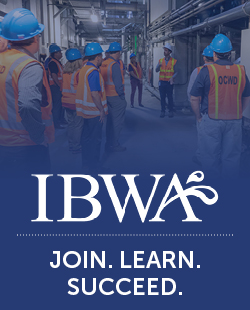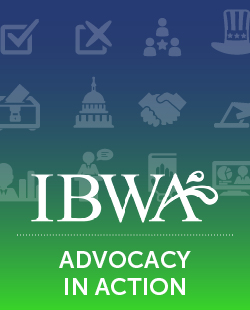Bottled Water Safety & Security
Bottled Water Safety & Security
Policy Statement
IBWA is dedicated to ensuring the safety and quality of bottled water. Bottled water producers utilize a multi-barrier approach, from source to finished product that helps ensure the safety and high quality of the product. IBWA is committed to preventing potential adverse events, both natural and man made, through monitoring and testing, risk assessment, appropriate controls and procedures, and diligence. Cooperation and the sharing of information between the bottled water industry and governmental agencies will provide the appropriate evaluations and responses to potentially hazardous events.
Background
The bottled water industry has long been on the forefront of anticipating and responding to the need for safe and quality drinking water to consumers, even in times of disasters. Bottled water is fully regulated as a packaged food product by the U.S. Food and Drug Administration (FDA) and bound by FDA’s quality, safety, inspection, enforcement and labeling requirements. Bottled water products are required to comply at all times with FDA Standards of Quality. These standards regulate bottled water to ensure the safety for consumers of their bottled water. As a packaged food, bottled water is subject to the full array of FDA enforcement actions including Warning Letters, recalls, civil (seizure and/or injunction) and criminal penalties under the Federal Food, Drug & Cosmetic Act’s misbranding and adulteration provisions, which help further ensure that only safe, high quality bottled water products reach the marketplace.
In addition to federal and state regulations, members of the IBWA are required to adhere to standards in the IBWA Model Code that, in several cases, are stricter than FDA and state bottled water regulations. As a IBWA condition of membership, bottlers must submit to annual, unannounced plant inspection by an independent, third-party organization on compliance with the IBWA Model Code.
Bottled water producers utilize a multi-barrier approach, from source to finished product, that helps ensure the safety and high quality of the product. Many of the steps in a multi-barrier system may be effective in safeguarding bottled water from microbiological and other contamination. Some of these measures include source protection and monitoring, distillation, reverse osmosis, one-micron filtration, ultraviolet light, and ozonation. Hazard Analysis Critical Control Point (HACCP) also plays a key role in management of potential hazards. Bottlers are encouraged to “think outside the box” when considering potential hazards and preventive actions. Preparedness is the keystone of a HACCP program.
While bottled water is enjoyed year-round by millions of consumers as their beverage of choice, it also provides a source of pure, safe drinking water in times of need. In the event of an emergency or crisis, the bottled water industry is always on the front lines, providing needed relief nationwide and around the globe.
In communities devastated by natural disasters such as hurricanes, blizzards, floods or other events that may affect a public drinking water system, the bottled water industry is the first on the scene with clean, safe water for drinking and cooking. Bottled water companies are reliable members of the community and are proud to help ensure that their neighbors do not lack the basic necessity of water.
In the aftermath of the tragic September 11, 2001, terrorist attacks that shocked the nation, bottled water companies responded immediately by donating several million bottles of water to emergency and rescue crews at crash sites in New York, at the Pentagon, and in Pennsylvania. Within hours of the first attack, bottled water was delivered where it mattered most: to emergency personnel on the scene who required ample water to stay hydrated as they worked to rescue victims and clean up debris. Long after the initial events of September 11, members of the IBWA continued to supply bottled drinking water to the men and women charged with the recovery efforts in the aftermath of these terrible events
The events of that tragic day highlighted the need for increased attention to security of the nation’s infrastructure and food supply. The bottled water industry was already aware of the need to protect the security of plant operations, and many of the programs in place anticipate, monitor, and detect potential harmful events. The recent terrorist activity is just a “further enhancement” of the awareness for tight security measures. IBWA has formed Task Forces on Emergency Preparedness and Packaging to continue addressing the security needs for the industry. IBWA has provided members with a detailed security checklist that includes information and resources covering the entire bottled water production process, the bottled water plant and surrounding grounds, warehouses and storage facilities, sources, employees and suppliers. Also included are crisis preparedness and response, and emergency contact information
In addition, FDA has issued Guidance for Industry – Food Producers, Processors, Transporters, And Retailers: Food Security Preventive Measures Guidance. This voluntary guidance outlines steps that can be taken to minimize and the risk of food being subjected to tampering or criminal or terrorist actions. The agency also distributed Operational Risk Management (ORM) which is a 6-step sequence to increase food safety and security by anticipating hazards and reducing the potential for loss.
Guiding Principles of Safety and Security
IBWA believes that the following set of principles should guide the industry in further enhancing the safety and security of the bottled water in these dynamic times. Advance planning and preparedness have always played a key role in mitigating the impact of disasters and are a part of a standard operating procedure.
A multi-barrier approach – Bottled water products are produced utilizing a multi-barrier approach, from source to finished product, that helps prevent possible harmful contaminants (physical, chemical or microbiological) from adulterating the finished product as well as storage, production, and transportation equipment. Measures in a multi-barrier approach may include source protection, source monitoring, reverse osmosis, distillation, filtration, ozonation or ultraviolet (UV) light. Many of the steps in a multi-barrier system may be effective in safeguarding bottled water from microbiological and other contamination. Piping in and out of plants, as well as storage silos and water tankers are also protected and maintained through sanitation procedures. In addition, bottled water products are bottled in a controlled, sanitary environment to prevent contamination during the filling operation
Risk assessment and management –IBWA members are required to employ a HACCP approach to quality assurance. This practice scrutinizes every step of the production process – from source to finished product – that are critically important to the safety of the product and puts in place systems to help ensure that all safety and quality control processes are functioning effectively. Identification of risk and severity of health effects and control measures for specific biological, chemical and physical agents are included. In addition, IBWA urges bottlers to incorporate the security checklist into their standard operating procedures.
Routine testing – Water used to produce bottled water is tested before production, during production, and as finished product. Multiple tests and regular screening are performed by trained quality control technicians to evaluate microbial, physical and chemical quality. Such screening can be used to detect the presence of agents that may be indicators of product contamination. These protection measures and other quality control programs help ensure no substandard products reach the market.
Sources and facilities are secure and monitored – Natural bottled water products, such as spring water or artesian water, come from well-protected, underground water sources. The water is collected at sites and bottled at facilities with security systems that may include controlled access to the plant and critical production areas, gating, motion sensors, electronic contact security alarms, and tamper-evident locks. Water intake systems are sanitary and sealed. For brands utilizing community water systems as their source, bottlers work in concert with community water authorities regarding the security and safety of the system’s source.
Consumer awareness – Virtually all bottled water producers utilize packages with tamper-evident seals. As with all food products, it is important that consumers visually inspect the container for anything unusual or suspicious such as a broken tamper-evident ring or seal or holes in the bottle. Consumers should also look for any unusual appearances or odors when consuming any product. If there are any concerns or evidence of substandard or product that has been tampered with, consumers should contact the company or distributor immediately to arrange for retrieval and testing of the product. IBWA Model Code mandates a telephone number for all members’ brand name products. If consumers want more information about their bottled water, they should contact the bottler and ask for the brand’s water quality report.
Conclusion
IBWA has always believed that only through diligence, awareness, evaluation and planning can the safety and quality of bottled water can be ensured. The recent tragic events have enhanced the awareness of the industry on this matter. IBWA supports measures that adhere to the principles outlined above and believes that cooperation between governmental agencies, private industry and researchers will better protect the nation’s water and food supplies.


